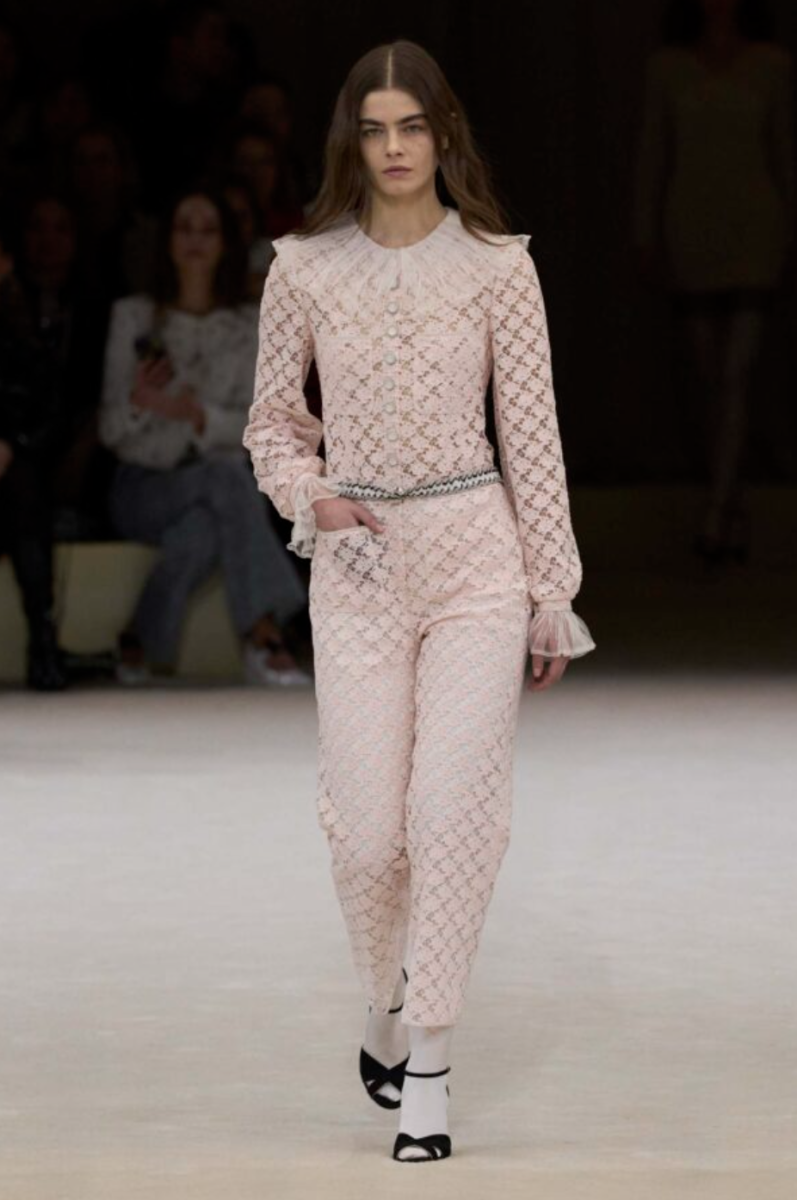It’s not uncommon for fashion brands to outlive their founder. Most brands you see frequently on the red carpet are legacies, like Louis Vuitton, Givenchy, and Valentino. These brands have cycled through both owners and designers with regularity. But the question remains, is what’s being produced really what this brand represents?
New designers heading legacy houses have a tough assignment; somehow, they have to stay true to the original designer’s ethos while also putting their mark on the brand. All that while remaining commercially viable.
However, I’ve seen frustration over sites like TikTok and YouTube that collections don’t respect the path the founder paved. I’ve seen this fervor with Andreas Kronthale’s collection for Viviene Westwood’s latest collection. Kronthale was the husband of the influential Westwood. “After all, there are so many variations of what “Vivienne Westwood” means — the brand has existed for over 50 years,” a CNN article points out. Designers often play with differing and even opposing aesthetics, but things can still feel off. For example, why did a brand known for sophistication like Dior spray paint the names of a classic perfume on top of classic coats? I believe the biggest culprit is the pure volume of clothing being produced right now.
There’s a lot of fashion out right now. According to Vogue Business, 97 brands show during New York Fashion Week alone. And bigger brands (which tend to be legacies) tend to show multiple times a year. This can include Autumn/Winter, Spring/Summer, Resort or Cruise, and Pre-fall. If designers are supposed to contribute 2-4 collections every year (as is typical), how are they supposed to be original with each one?
In 2011, avant-garde designer John Galliano was fined for anti-Semitic hate speech in France and was ousted from his jobs at Dior (and eventually his namesake brand), according to The Guardian. He blamed his actions on the stressors of helming two successful brands (at times, he oversaw 30 collections yearly, according to (at times, he oversaw 30 collections yearly), and the substances he took to deal with those stressors. His latest collection at Maison Margiela took a year to design, and also received a rave review from major fashion publications and designers.
Spending more time with an idea instead of cranking out collections seems to yield better, more adventurous results. The main denominator between brands that are sometimes maligned for playing it too safe has been the quantity of product that’s produced.
Countless designers have complained about the breakneck speed of the fashion industry, but choose to maintain the status quo so their designs can sell. And with the rise of luxury conglomerates (like LVMH or Kering), which own most large brands, designers have also mentioned that they are not only pushed to design multiple collections in a year but also to sterilize their designs so that they’re more commercial and fit more within trends.
Tatler Asia comments that “in the fast-paced world of fashion, the focus can sometimes shift from craftsmanship and substance to instant gratification and fleeting trends—and this may well generate excitement and attention in the short term… But it could lack substantial long-term impact.”
But brands can successfully change and evolve in a new ecosystem (especially one that involves social media).
The best example is the legendary surrealist brand Schiaparelli, which was founded in 1927, according to the brand.
Right now, the brand is led by Daniel Roseberry. Roseberry has made a point of not including too many allusions to Elsa Schiaparelli’s work. In fact, he said in the past few years, the brand has been heavily inspired by its heritage, so, in order to change the conversation, it was important that there were no references. It was more about capturing the spirit and the bravery of Schiaparelli.” I think that’s exactly the philosophy that benefits fashion designers helming legacy brands. Rosenberry has been able to make a brand founded in the 1920s feel both futuristic, and historical. For example, the Schiaparelli Haute Couture Show featured outfits decked out in 2000’s gadget hardware, and even a baby made out of retro hardware (which gave the brand significant online buzz).
However, one of Schiaparelli’s contemporaries seems to have had a harder time adapting to a brand of relevance and appeal. Chanel, headed by designer Virginie Viard, doesn’t have the sleekness or sportiness that Coco Chanel herself championed. Veteran industry reporter Amy Odell comments that Viard’s collections don’t land with reviewers on social media. I think it’s important to note that the brand itself says that it produces ten collections a year, which is far beyond the norm even for larger brands.
To sum it up, brands don’t have to be stagnant and stuck in the past when creating new collections. An example of a success story is Gucci. The brand got its start producing leather goods in 1921 but has (obviously) moved far beyond a simple luggage brand. In 1994, Tom Ford had an unenviable task. He had to revitalize the brand which was struggling with both its identity and finances. He introduced sleek, modern designs that positioned Gucci as the fashion house it is today, proving it can be done.



